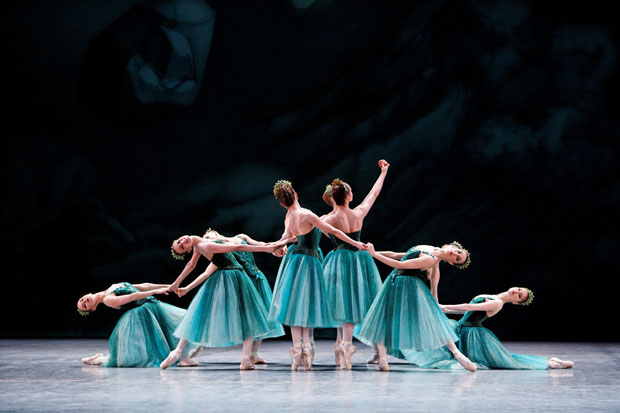
© Agathe Poupeney. (Click image for larger version)
Jewels, choreography by George Balanchine, ©The George Balanchine Trust.
Lincoln Center Festival
Paris Opera Ballet, New York City Ballet, Bolshoi Ballet
Jewels: Emeralds, Rubies, Diamonds
****
New York, David H. Koch Theater
20, 21 July 2017
www.operadeparis.fr
www.nycballet.com
www.bolshoi.ru
www.lincolncenter.org
www.davidhkochtheater.com
Jewels, the International Edition
The Lincoln Center Festival Jewels, performed by the mighty trio made up of Paris Opera Ballet, New York City Ballet, and the Bolshoi, has turned out to be even more of an event than it promised to be. What seemed like a brilliant marketing concept – three of the worlds’ great companies! An international theme! – has revealed itself to be both that (and there’s nothing wrong with a bit of buzz) and an exciting opportunity to observe how different companies, and different dancers, approach the style and ideas of George Balanchine. Jewels was always, on some level, conceived as a showcase: of musical styles, of moods, of different facets of Balanchine’s esthetics and imagination. As Arlene Croce wrote in The New Yorker, “it is still unsurpassed as a Balanchine primer, incorporating in a single evening every important article of faith to which the choreographer subscribed and a burst of heresy, too, to remind us that he willingly reversed himself on occasion.”

© Stephanie Berger. (Click image for larger version)
Jewels, choreography by George Balanchine, ©The George Balanchine Trust.
This holds particularly true in these performances, where the ballet’s contrasts are heightened by the occasion. Though dozens of companies perform it, Jewels is nowhere more commonplace than in New York, at New York City Ballet. Seeing it here, it seems that we – the audience, the company – may have taken it a little bit for granted in recent years. It is a marvelous ballet, and a gripping one, when performed with the intensity we’ve seen in the last few days. Not to mention the glory of the music on which it is based: excerpts of Gabriel Fauré’s Pelléas et Mélisande and Shylock, Stravinsky’s Capriccio for Piano and Orchestra, and four movements of Tchaikovsky’s third symphony.
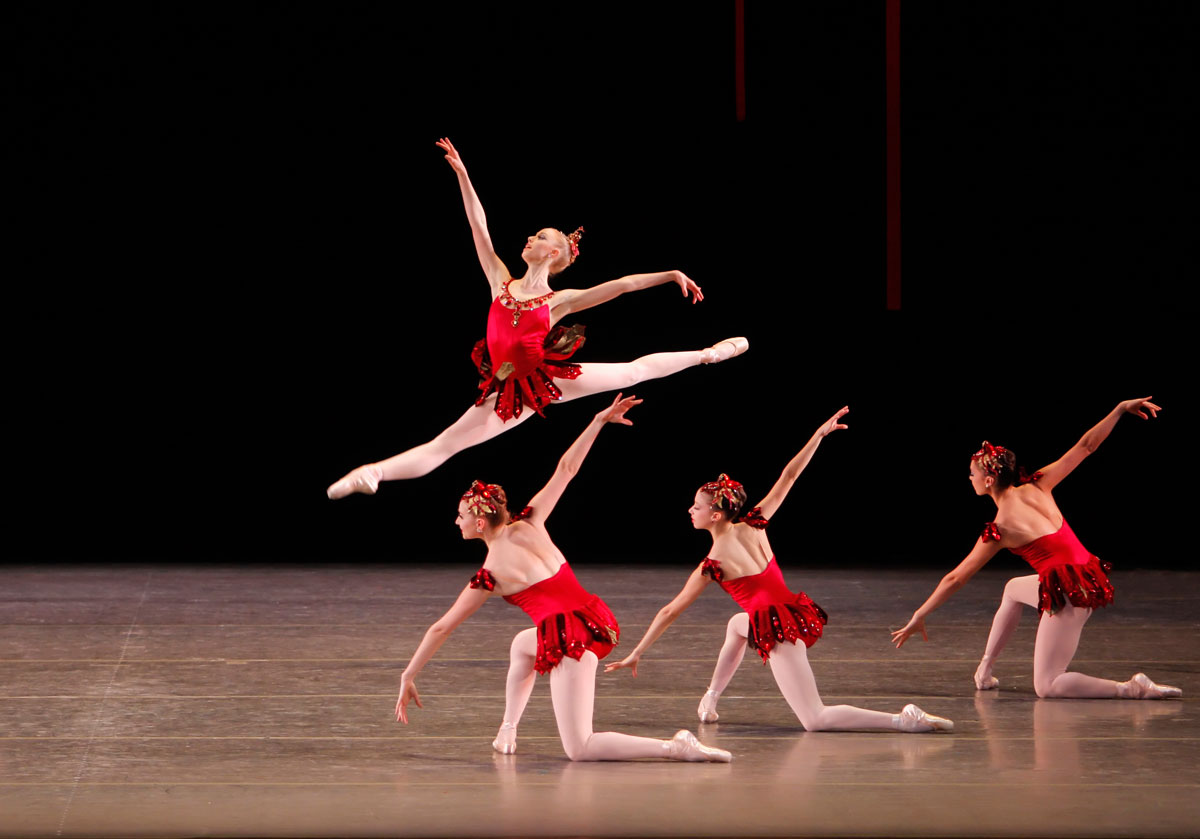
© Paul Kolnik. (Click image for larger version)
Jewels, choreography by George Balanchine, ©The George Balanchine Trust.
The New York City Ballet orchestra, under the baton of Andrew Litton, has held up its side of the bargain. Seldom have I heard it play with such focused intensity, such assurance, and such clarity among the individual players, especially true in the chamber-music-like moments in the Fauré. Emeralds, in particular, has often suffered from pallid playing, seeping away its atmosphere. Litton’s interpretation here is infused with a sense of wonder, even rapture. Props too to the pianist Stephen Gosling in Stravinsky’s Capriccio, a devilishly hard piano part that often gets lost in the muddle of this complicated, heavily syncopated score.
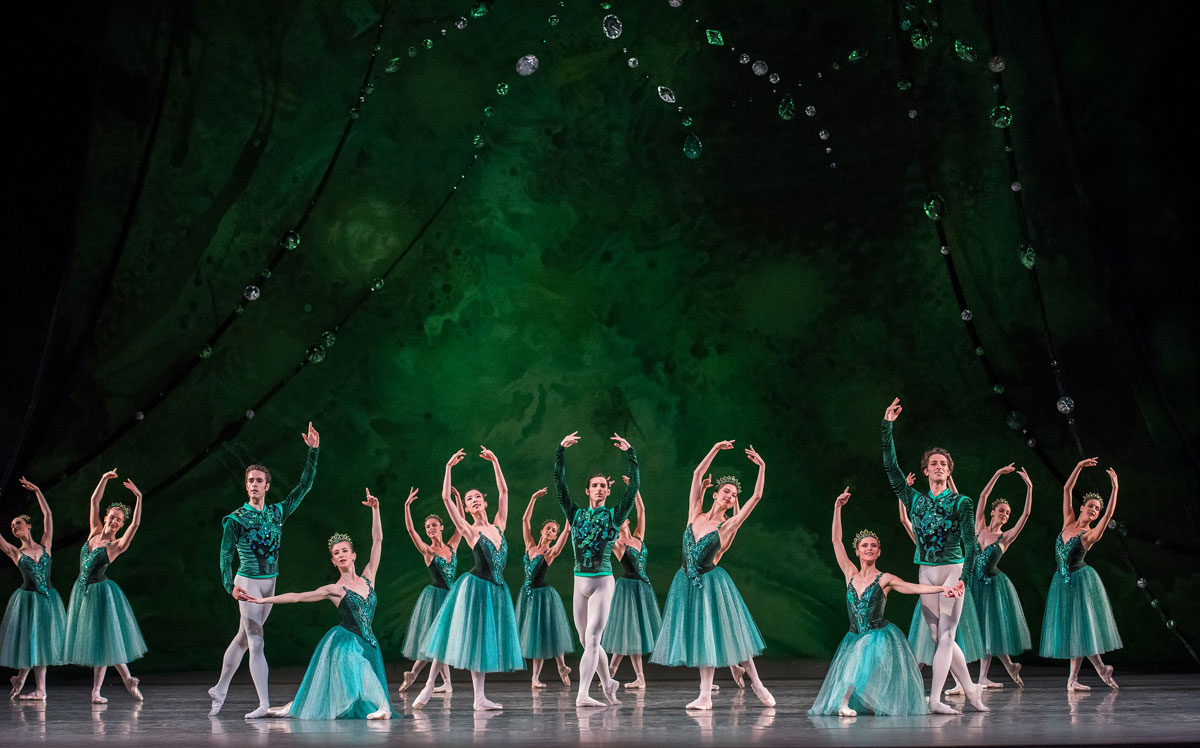
© Stephanie Berger. (Click image for larger version)
Jewels, choreography by George Balanchine, ©The George Balanchine Trust.
But let’s get to the dancing. I saw two performances: opening night (July 20) and the following evening. On Thursday, Paris Opera performed Emeralds, New York City Ballet Rubies, and the Bolshoi Diamonds. On Friday, a different French cast took on Emeralds, and the other two companies were reversed. Each night had its highs and lows.

© James Bort. (Click image for larger version)
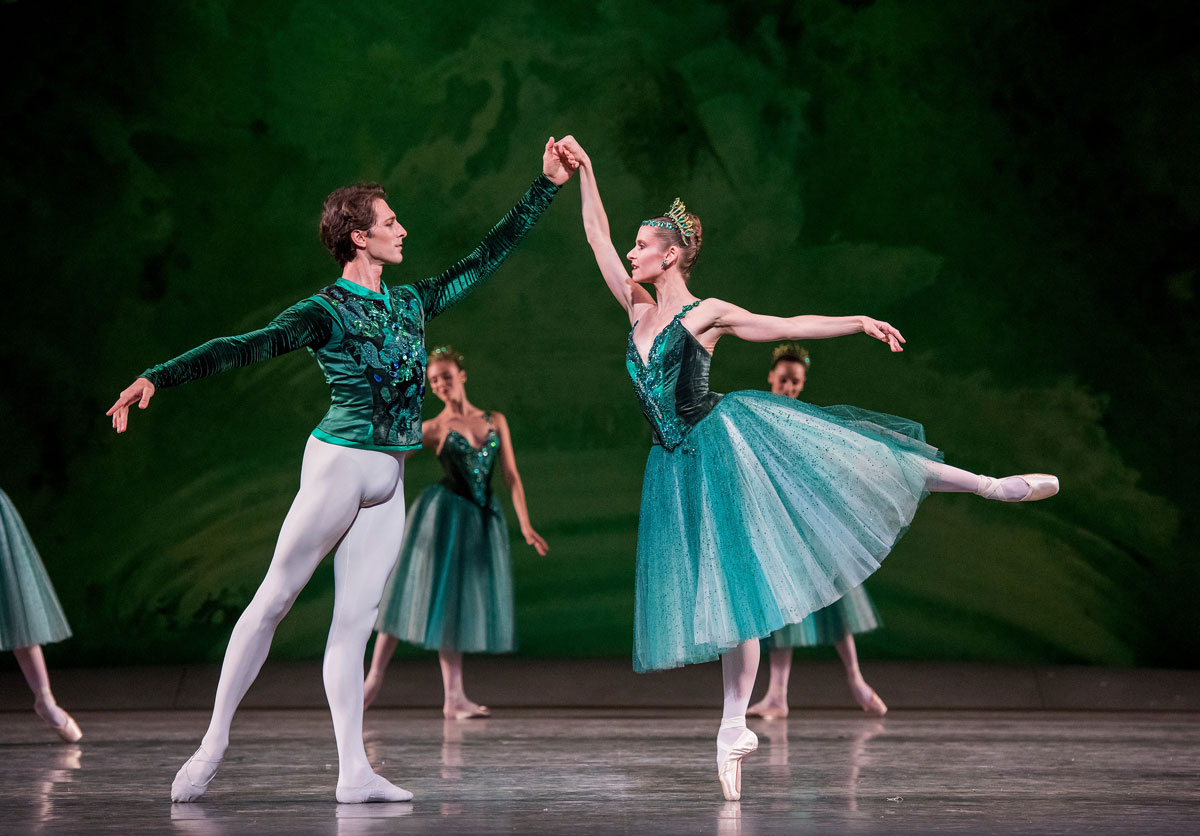
© Stephanie Berger. (Click image for larger version)
Jewels, choreography by George Balanchine, ©The George Balanchine Trust.
Neither of the two dancers in the second (Emeralds) role, Myriam Ould-Braham (July 20) and Léonore Baulac (July 21) was completely satisfying. Ould-Braham was too recessive, almost lost-looking (though there was a certain poetry to her vagueness); Baulac, a little too vigorous. But the Friday performance was elegant and alive, and brought forth that elegiac quality that makes Emeralds so moving, particularly at the end, when the cast seems to respond to a mysterious call. The women drift away and the men – the excellent Hugo Marchand, Germain Louvet, and Marc Moreau – kneel and reach forward toward an invisible force or light. I’ve always thought of them as knights called on a holy errand. But maybe I read too many chansons de geste in college.

© Paul Kolnik. (Click image for larger version)
Jewels, choreography by George Balanchine, ©The George Balanchine Trust.
Watching New York City Ballet dance Rubies is like watching a school of fish in the sea. The ballet’s jazziness, stylishness, and attack, are part of them; they don’t need to add on any extra layers. Their performance on July 20 was searing, happy, energetic. Teresa Reichlen, as the Amazon who breaks away from the corps with great strides and vamping poses, dominating all around her – a jazz age queen – danced with that relaxed, teasing glamor that has come to define her in this and other roles. “What, these legs? Forget it! It’s nothing.” Megan Fairchild and Joaquin de Luz were at their ebullient best; she gave a particularly courageous performance, pushing every leg swing, every off-balance maneuver, to the limit, casting all caution to the winds. De Luz was a little torero, striding across the stage, propelling himself into quick clean jumps, or leading his pack of banderilleros on a wild chase.
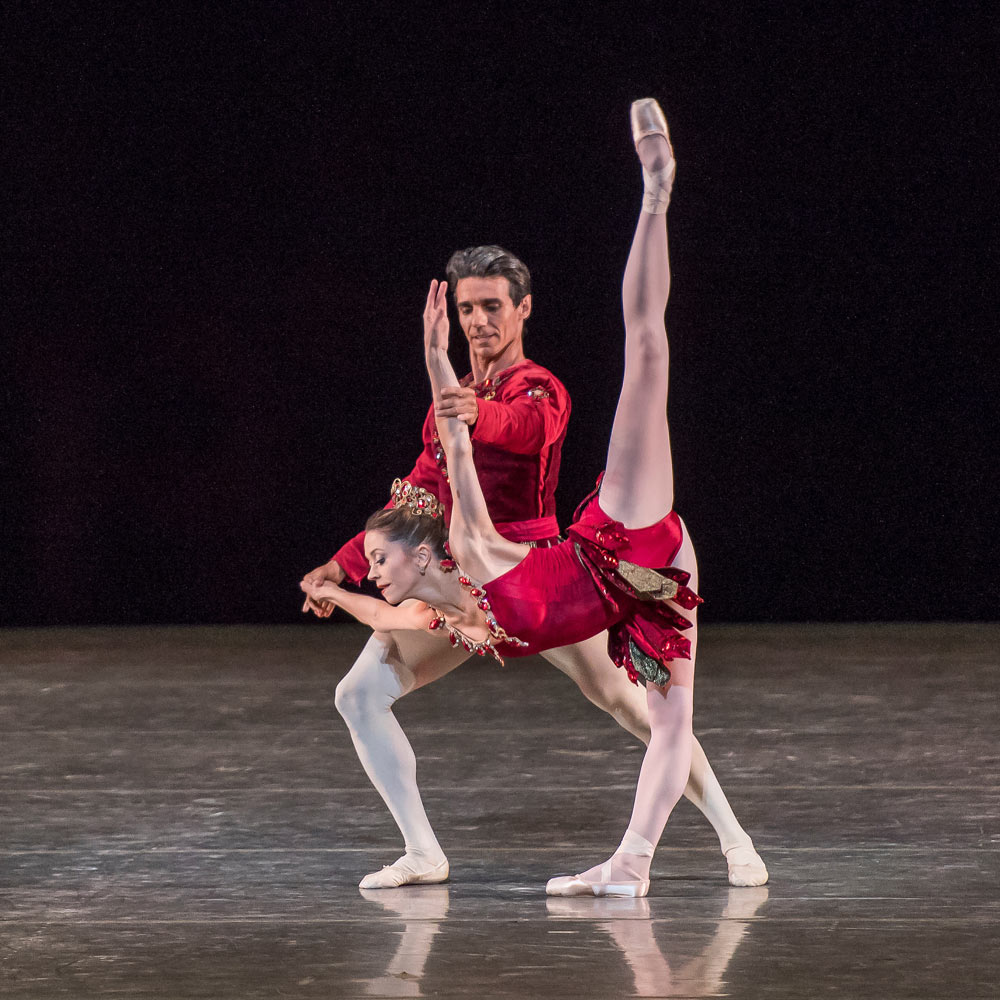
© Stephanie Berger. (Click image for larger version)
Jewels, choreography by George Balanchine, ©The George Balanchine Trust.
In contrast, the Bolshoi (in Rubies) looked very much like a company trying on an unfamiliar language. The poses and steps were all there, but felt awkwardly accented, unfamiliar. The vamping was too sharp; the playfulness too cutesy (particularly in the case of Artem Ovcharenko), the turned in positions too turned in, the hip bumps too accentuated. They should look thoughtless, innocently vulgar, not calculated. It will be interesting to see Ekaterina Krysanova, who performed the pas de deux here with somewhat exaggerated charm, in the Bolshoi’s new work, The Taming of the Shrew, which will be performed next week.
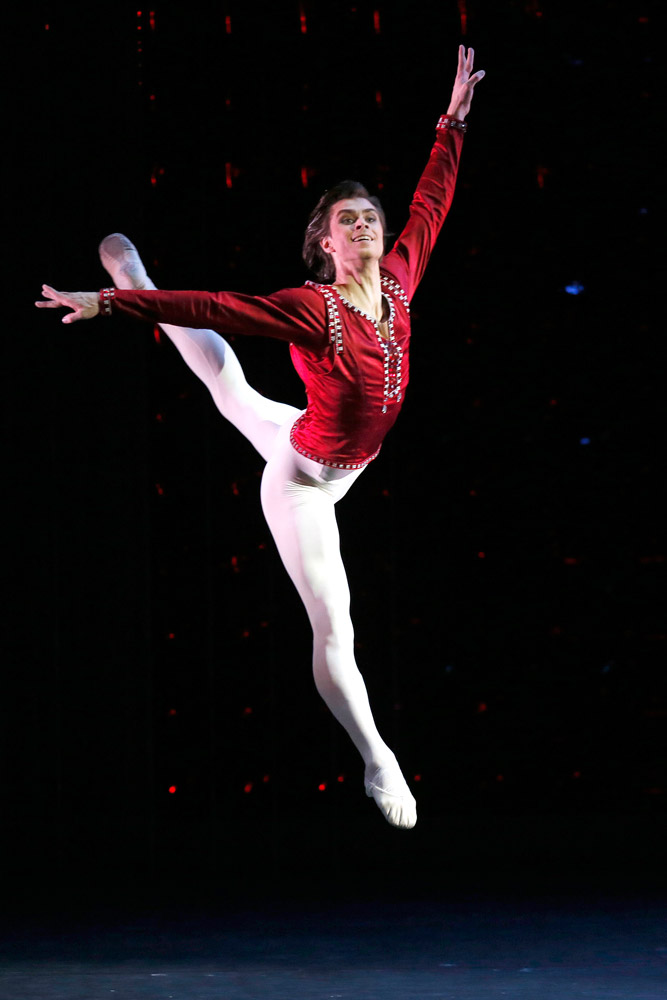
© Damir Yusupov. (Click image for larger version)
Jewels, choreography by George Balanchine, ©The George Balanchine Trust.
Their (Bolshoi) costumes, by Zaitseva, are also less successful than the originals, by Karinska. They’re too modern-looking and stretchy. Each company brought its own wardrobe. The Lacroix Emeralds were a bit too bluish, but otherwise lovely. The Russian Diamonds tutus are very classical and very white; Karinska’s are softer, more droopy and slightly faded-looking.
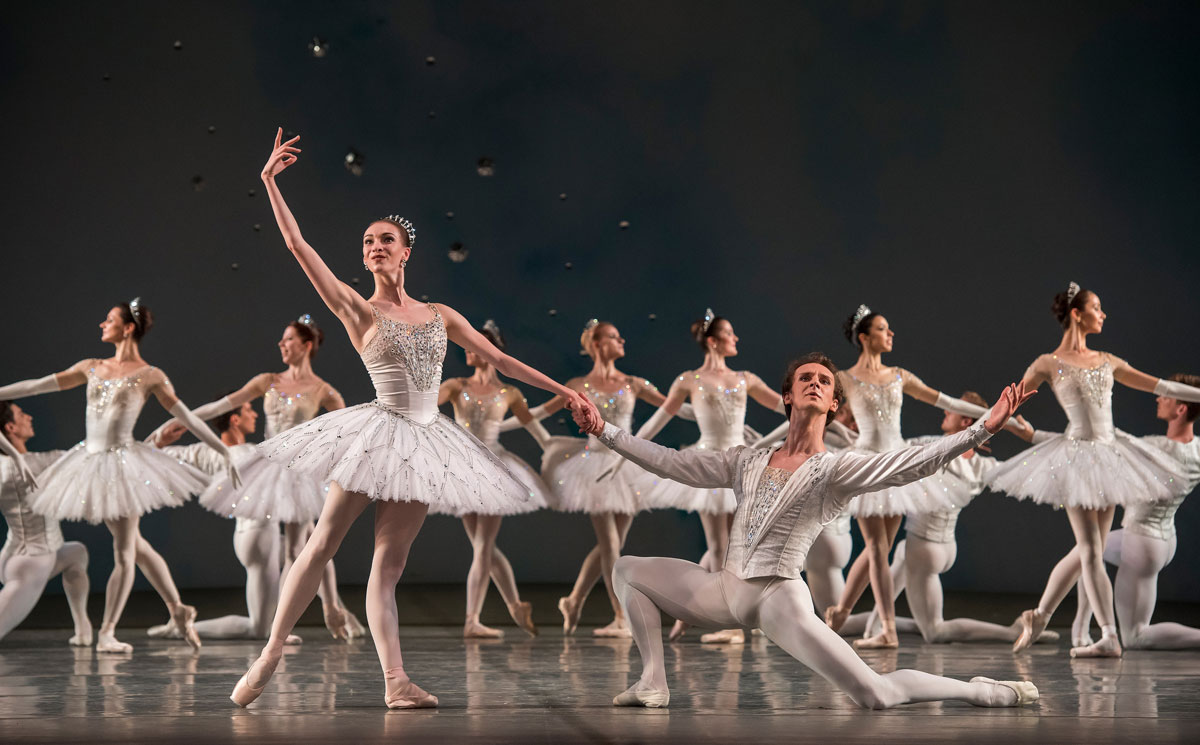
© Stephanie Berger. (Click image for larger version)
Jewels, choreography by George Balanchine, ©The George Balanchine Trust.
The Bolshoi found itself in more familiar territory with Diamonds. Here the contrast between NYCB and its Russian counterpart was even more striking; what was thrilling was to see that both approaches worked well, while leaving one with different emotions and impressions. The two ballerinas who performed the central role, Sarah Mearns and Olga Smirnova, are equally extraordinary, each in her own way. Smirnova, a wisp of a woman with long arms, legs, neck, and fingers, was melancholy, introspective; she seemed to swim in the music, like a magic creature. Sometimes her long fingers, caressing the air, looked almost like delicate plumage. Mearns is bold, larger than life, and, most of all, dramatic. She throws herself into the movement. Each run is an escape, each embrace a kind of desperate plea. Where Smirnova was delicate, Mearns was muscular; where Smirnova seemed to dance in a dream, Mearns’s interpretation called to mind human, flesh-and-blood emotion, the here and now. It would be impossible to choose one over the other. Both Tyler Angle and Semyon Chudin were admirable partners. Angle was more intimate, more gentlemanly; Chudin more remote, more devoted to the exaltation to his partner. In the scherzo Chudin executed bigger jumps and the more centered turns à la seconde, which Balanchine set, cleverly, to a passage in the score that sounds like a magician brewing a spell.

© Paul Kolnik. (Click image for larger version)
Jewels, choreography by George Balanchine, ©The George Balanchine Trust.
The Bolshoi’s interpretation of Diamonds feels slower – is it actually slower, or simply less rhythmic? – and rounder, more majestic, and more grounded. The folk passages in the Scherzo, where a little Russian melody rises out of a sea of skittering phrases, are more recognizable. A bit of Raymonda in a sea of Sleeping Beauty. City Ballet’s waltz has more spring in its step; it feels lighter, but less sumptuous. As a whole, the City Ballet dancers look younger, less womanly; is it a question of presentation, of esthetics, or something in their dancing? It’s fascinating to ponder these and other contrasts.

© Damir Yusupov. (Click image for larger version)
Jewels, choreography by George Balanchine, ©The George Balanchine Trust.
In any case, these performances, which continue through the weekend, are a triumph for the outgoing director of the Lincoln Center Festival, Nigel Redden, who came up with the idea. It’s not often that one gets to see three such companies side by side, or to experience a work as familiar as Jewels with new eyes.












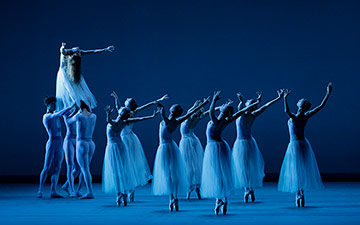
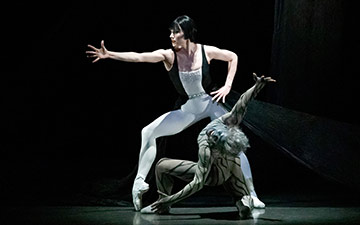


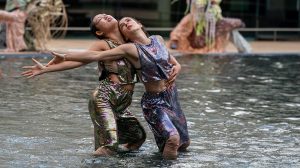
You must be logged in to post a comment.